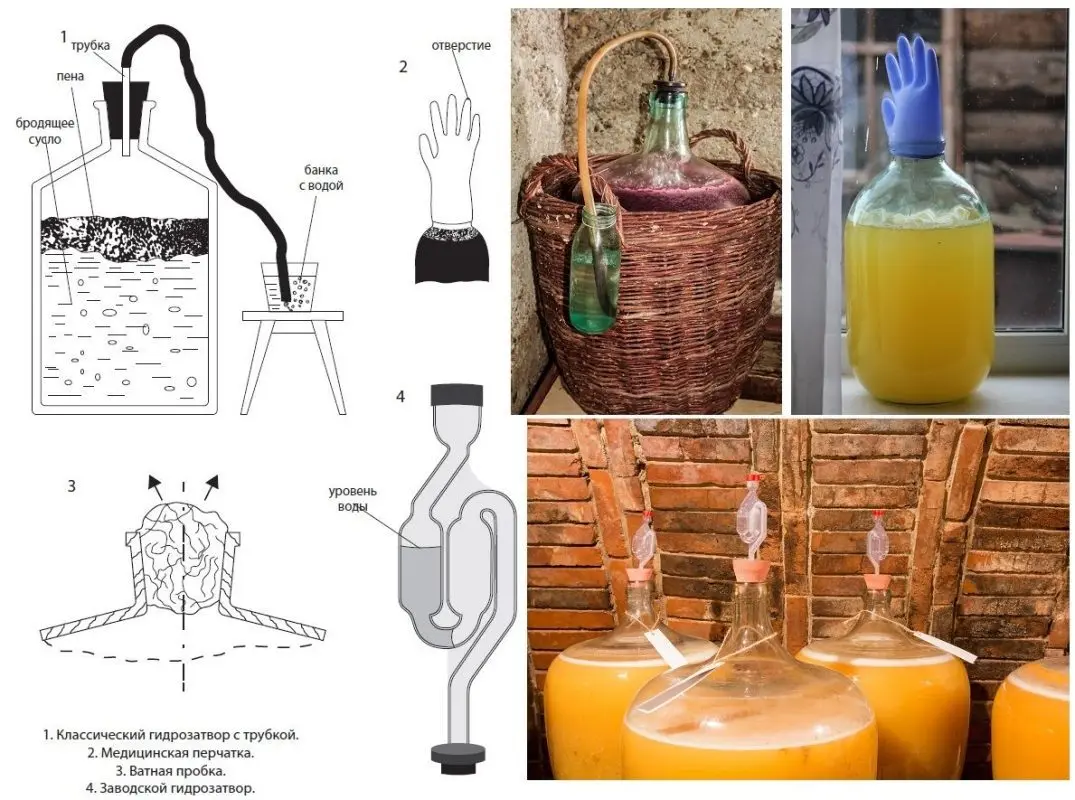Subject to the technology of preparation, wine from frozen berries turns out to be almost as tasty and aromatic as from ordinary ripe raw materials. You just need to know a few nuances.
Any frozen berry is fine, but cherries, strawberries, blackcurrants, and raspberries work best. Dry freezing is ideal, as it minimally affects the fruit. If the berries were frozen with water, then they should be used together with the thawed liquid. It is advisable not to mix the raw materials, because it is difficult to predict the taste, most likely, you will get a drink with the taste of compote.
To preserve the taste and aroma, the berries must be properly thawed without exposing them to temperature shock. To do this, one day before making wine, the berries are transferred from the freezer to the usual compartment of the refrigerator with a temperature of + 2-4 ° C.
Since “wild” yeast from the surface of the fruit after defrosting may not start fermentation, it is required to add wine yeast or homemade sourdough. You can not add ordinary baker’s or alcohol yeast, otherwise you will get ordinary mash instead of berry wine.
To prevent contamination of the wort by pathogenic microorganisms, all used containers must be rinsed with boiling water and wiped dry with a clean, dry cloth. You can work with raw materials only with well-washed hands.
frozen berry wine recipe
Ingredients:
- frozen berries – 3 kg;
- water – 3 l;
- sugar – 600 g + to taste for sweetness;
- wine yeast or raisin sourdough – for 6 liters of must.
Technology of preparation
1. Defrost berries. If cherry is used, remove the seeds, knead other raw materials with your hands. I do not advise whipping in a blender, because in this case the seeds or seeds will be damaged and the finished wine may be bitter.
2. In a container with a wide neck (non-metallic saucepan or bucket), mix the berry mass, water and 50% sugar (according to the proportions in the recipe 300 g). Add sourdough or wine yeast.
3. Cover the container with gauze or cloth to protect against insects, then transfer to a dark place with a temperature of +18-25 °C and leave for 3 days. Every 12 hours, stir the must with your hand or a wooden stick, drowning the pulp in the juice – the floating particles of berries.
After a day (usually earlier – after 8-12 hours), signs of fermentation should appear: hissing, foam and a sour smell. This means that the process is running normally.
4. After 3 days, strain the wort through several layers of gauze, squeeze the pulp dry (no longer needed).
5. Add 25% sugar (150 g) to the liquid part and mix.
6. Pour the wort into a fermentation tank, fill up to a maximum of 75% of the volume to leave room for another portion of sugar, foam and carbon dioxide. Close with a water seal of any design. You can use a medical glove with a hole in one of the fingers (pierce with a needle).

7. Transfer the wine from frozen berries to a dark room with a stable temperature of +18-25 °C. Leave until the end of fermentation.
8. After 10 days from the date of installation of the water seal, add the remaining sugar – 25% (150 g). To do this, pour 100 ml of fermenting wort into a separate container, dilute sugar in it, then pour the resulting syrup back into the fermentation container and close it with a water seal.
Fermentation usually lasts 40-50 days. The end of the process is indicated by the absence of gas bubbles from the water seal (deflated glove), a layer of loose sediment at the bottom and a significant clarification of the wort.
Attention! If the fermentation has not stopped after 55 days from the moment the water seal was installed, in order to avoid bitterness, the wine should be removed from the sediment (poured through a tube into another container) and left to ferment under a water seal under the same conditions.
9. Pour the fermented wine from frozen berries through a straw into another container, without touching the sediment at the bottom.
10. Sweeten the drink with sugar to taste. You can also additionally fix with vodka or alcohol in an amount of 2-15% of the volume. Fortified wine is tougher in taste, but it is better stored.
11. Pour the wine into aging tanks, being careful to fill up to the neck to minimize contact with oxygen. Close hermetically and transfer to a refrigerator or cellar with a temperature of +2-16 °C for aging. Leave at least 5-6 months (preferably 8-9).
12. When a precipitate appears with a layer of 2-3 cm, filter the drink by pouring it into another container. The wine is considered ready if the sediment does not appear for at least a couple of months, then it can be poured into bottles for storage.
In the refrigerator or cellar, the shelf life of homemade wine from frozen berries is up to 4 years. Fortress – 9-14% vol.










